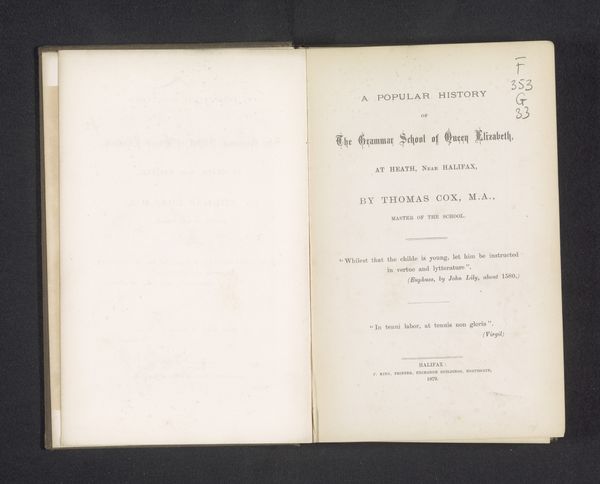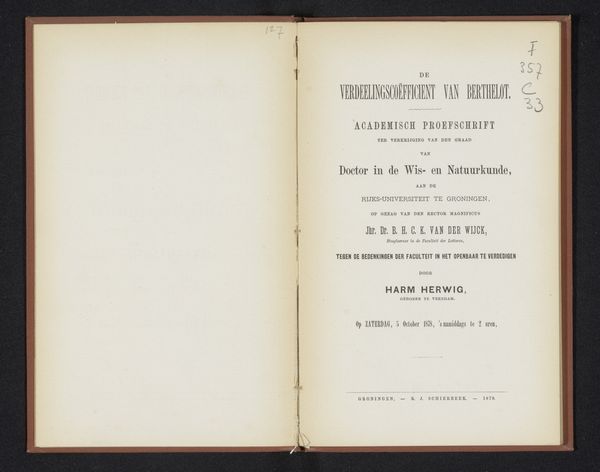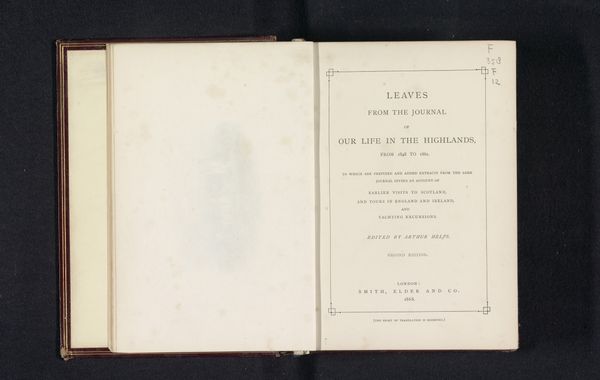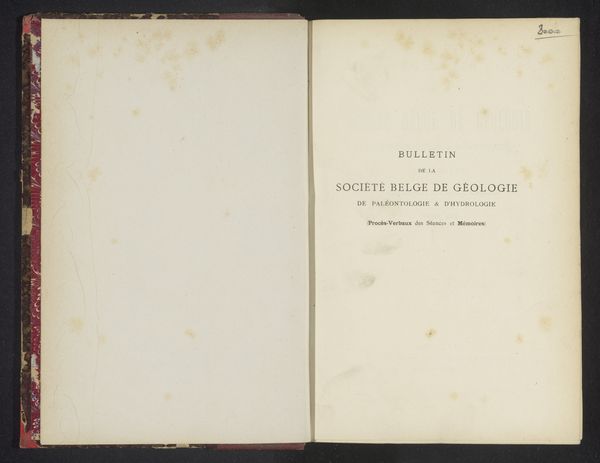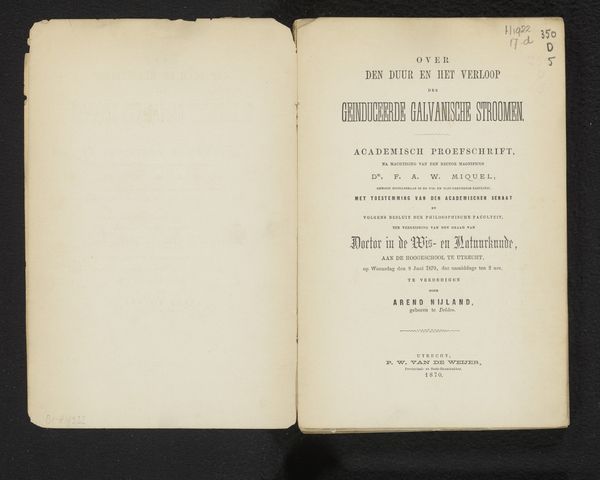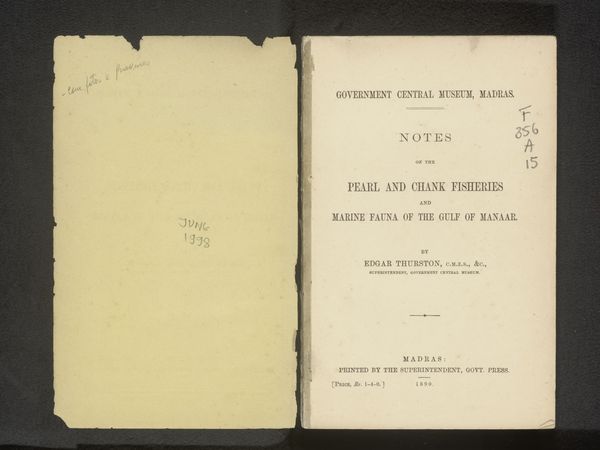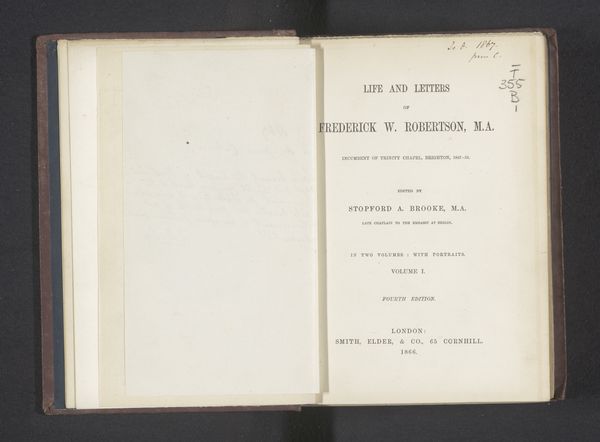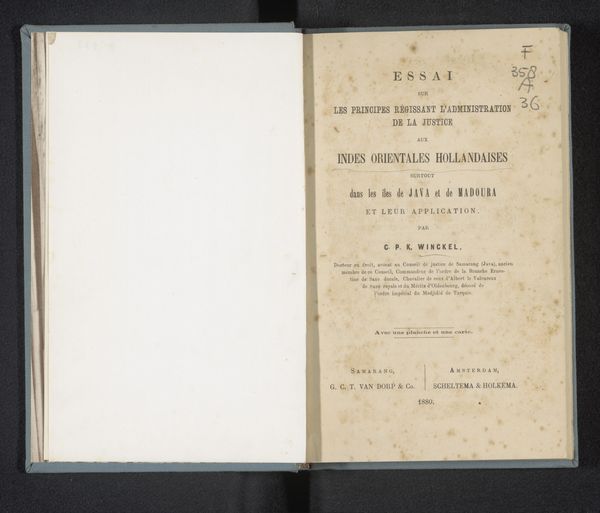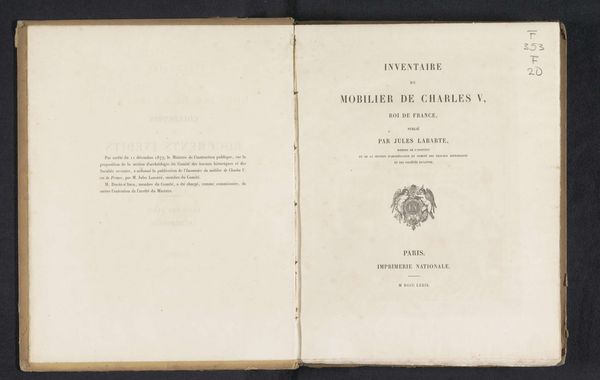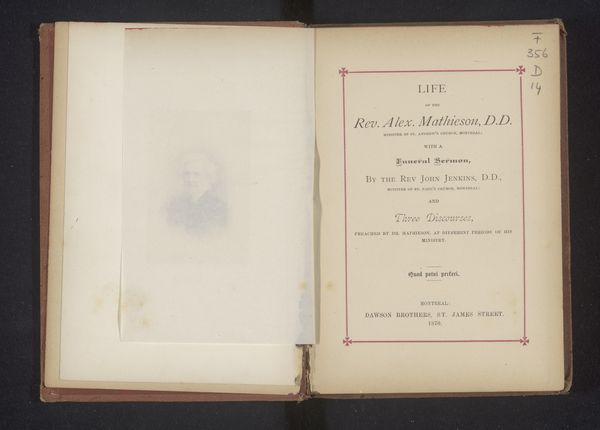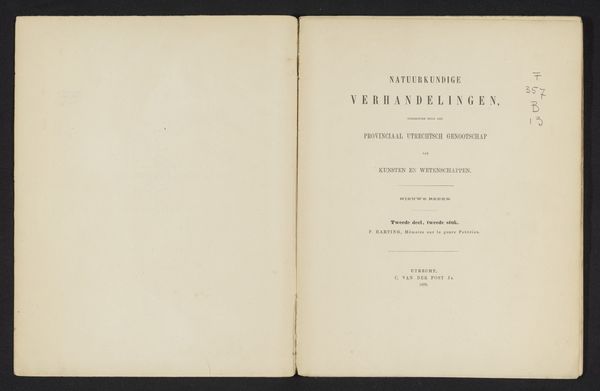
print, photography
# print
#
photography
Dimensions: height 224 mm, width 166 mm, thickness 21 mm
Copyright: Rijks Museum: Open Domain
Curator: Let's turn our attention to "Wharncliffe, Wortley, and the valley of the Don," a fascinating 1864 piece by Theophilus Smith, presented as a photographically illustrated book. Editor: The visual weight certainly leans toward the textual. The font choice and arrangement offer a peculiar symmetry, creating a hierarchy where the text takes precedence over the photographic illustrations. It almost feels like the photos are footnotes to the literary experience. Curator: I find it fascinating to consider this work within the context of industrialization in the mid-19th century. The valley of the Don was a hub of industry. Do you think Smith’s intention was to capture, even perhaps celebrate, a landscape irrevocably changed by capitalist forces? Editor: That’s compelling. One could argue that, formally, the sharp, defined edges of the typeface mimic the rigid structures imposed upon the natural landscape by industry, hinting at themes of control and alteration. It speaks to the emerging visual language of industrial progress. Curator: It brings up so many points of discussion around environmental impact, the working class and representation. Also, thinking of the artist, what class did Smith come from, what sort of access and privilege did he have to produce work such as this? Editor: That line of inquiry is essential. Thinking purely about structure, I find that its bareness creates a stark contrast. In a period saturated with decorative embellishment, such minimalist form becomes provocative, forcing attention onto content above ornamentation. Curator: Exactly! And isn't this sparseness, this reduction, also telling us something about the human condition amid progress? Are these spaces truly accessible to all, or are there invisible barriers erected through economic disparities and power dynamics? The images act as a mediator. Editor: Well, looking at the interplay between positive and negative space it creates an odd sense of tension, inviting us to scrutinize the relationship between what is presented versus what remains unsaid or unseen. There is a strong, and odd use of void in this book cover. Curator: Precisely, the voids reflect the absences within society at large. Working class existence perhaps, or marginalized people that tend to be hidden, unacknowledged labor within that industrious engine. Editor: It has given me much to think about. It appears very simple, at first. But on inspection there are multitudes of complex decisions contained. Curator: Absolutely, and the discussion highlights the intersection of material conditions, artistic intention, and reception. I appreciate having had a chance to view art from such an important position in culture and history.
Comments
No comments
Be the first to comment and join the conversation on the ultimate creative platform.
